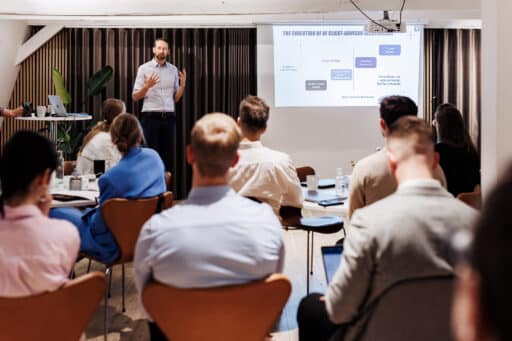The delegation of decision-making power to the leaders closest to the tasks is a modern mantra. This provides agility and speed - but is also associated with uncertainty and risks for the leaders who have to justify ever more critical decisions upward in the system. Despite the prevalence of talking about leading upward as a necessity for success we see leaders give up and ask for direction. The management on the other hand waits for solutions, creativity and entrepreneurship from below. So, what does it take to succeed?
What are you looking for when you lead upward?
he speed of change demands well-run leadership pipelines with information regarding resource, customer, product and market conditions to easily move across the hierarchy to secure reality-based strategy and leadership. A critical factor in upward leadership is to understand the leadership pipeline and be able to act in line with the different managerial foci. Good leadership depends on what you are leading (Noels et al. 2011).
When leading upward curiosity about what it takes to make your colleague succeed in his or her goals is needed. A method is to use the change telescope. When leading upward you should be searching for what your leader is searching for - this creates the experience that you are co-creating leadership. Leading your leader further makes it possible for you to navigate In VUCA conditions.
Figure 1: The Change Telescope
- Identify what creates value
- Analyze the extent and the impact of the change
- coordinate with all parties involved - upward, downward and
Leadership also takes place outside the classic leadership pipeline. A lot of organizations use matrix organization to work across silos, subject areas and leadership pipeline which makes upward, downward and sideways leadership essential. To understand upward leadership, it is necessary to nuance our understanding of leadership and strategy development.

Learn more about our training on creating effective leadership teams
LEAD offers certification in developing effective leadership teams with the development tool Effect.
With a certification, you will be equipped to use Effect in a development process in your organization at both group and organizational level.
Leadership and strategy are co-created
Leadership does not result from a title or develop automatically. The primary goal of leadership is to create results and results are produced together across organizational boundaries when we succeed. Thus, we need to reject the idea of leadership as an output from the individual leader. Instead we need to see leadership as co-created by creating a united course, by coordinating tasks and efforts and by ensuring commitment to the task (Drath et al. 2008).
The Hourglass
To succeed in leading upward, leadership and strategy must be understood and executed as a bidirectional process where decisions from above and information from below continuously qualify one another.
As in the hourglass the sand must run both ways regularly.
When direction is given, the leaders do not understand it since they were not involved in the strategy formation and therefore ask for detailed action plans. The result is far from distributed decision-making power and a strategic course anchored in customer, product and market conditions.
When mindset and structures are trapped in this strategy understanding it is difficult to be agile in VUCA conditions and therefore to mobilize leaders to take responsibility, take risks and lead upward.
The understanding of strategy as a process which encompass translation of market and customer knowledge from the front workers to the boardrooms is rarely seen - both in classic hierarchies and matrix organizations. For a start it is helpful to start the conversation by talking about your leadership and strategy understanding: is it classic or distributed?
Bridgebuilding is a crucial competence in upward and sideways leadership
It is essential in upward and sideways leadership for tasks and projects to be linked to the team's targets. Conflicting demands often arise when you work with traverse projects with disagreement regarding resource pressure, product development etc.
The solution is not to break down silos but to be better at identifying the barriers and building bridges across these. Bridges needs to be built with a focus on the common general strategies, tasks and targets. The leaders need to create and facilitate involving processes regarding targets and success criteria in a traverse project - to co-create the strategic course (Kaiser & Sørensen, 2018).
When leading upward, you are searching for the same as you leader from his perspective. When leading sideways you are searching for barriers between levels, departments and teams and building bridges across these by focusing on co-creating course and coordination of the task across silos and hierarchy levels.
Feedback as a mutual obligation in upward, downward and sideways leadership. To lead upward and sideways it is essential to take risks and use yourself in the process. Feedback is a way to help, be available and challenge your co-worker. To receive feedback is an opportunity to reflect on the effect of your own behavior.
Leaders naturally needs feedback on their management actions. Feedback must always be concrete and regard a definite situation and behavior - and the experienced effect of this. If your leader confuses you or has a bad start - tell her. Always ask for permission and invite others to give feedback as well. This makes the feedback a mutual commitment and tool to succeed upward and sideways.
Good advice for leading upward:
- Begin the conversation about what leadership and strategy is to you: classic hierarchy - or something you produce together
- Understand what is important to your leader and help her succeed in this.
- Build bridges across when you are caught in a cross-pressure
- Make feedback a mutual obligation




